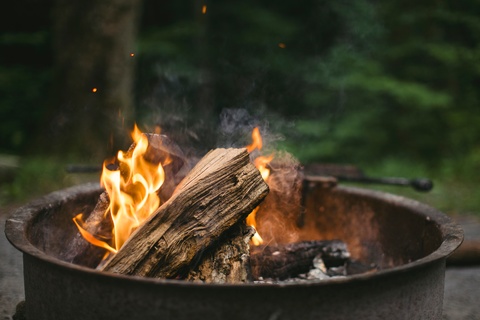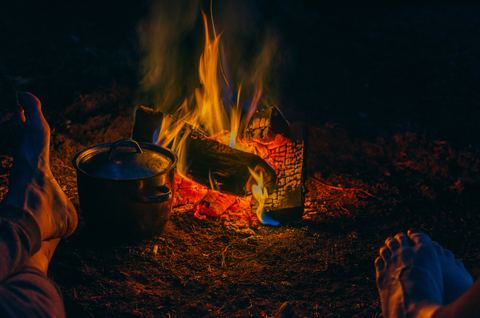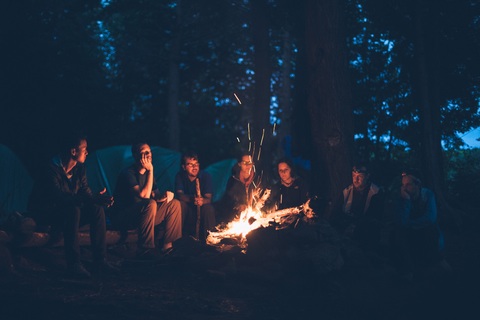
When it comes to campfires, bigger is not necessarily best.
Not all wood is equal. Some types of timber burn better than others but we aren’t always spoilt for choice when it comes to finding firewood at camp. But no matter what type of tree it comes from, it should be dead and dry, which is known as ‘seasoned’.
The drier it is, the better it’ll burn. If you’re not sure if it’ll burn or not, a general rule of thumb is if the wood makes a snapping sound when it breaks, it’ll burn!

Hardwood has more wood matter in it than softwood, so it’ll burn hotter for longer.
Softwood on the other hand tends to burn faster and cooler, but it’s usually easier to light up making it for getting a fire started.
For cooking, avoid softwoods and highly resinous woods like pine or juniper. Not only do they burn cooler and inconsistently, but they give off very potent resin smell which doesn’t work well with food, and some varieties can even be toxic. Go for something like oak or a gum variety, which burns well and imparts a nice smoky flavour
Clear a space around your fire by removing any branches, leaves or twigs that could catch light with at least a 2-3m radius.
Dig a 30cm pit or trench to house the fire and prevent embers from flying out.
Create a border around the fire using large solid rocks.

Some types of rocks will explode when they get too hot. There are two main reasons why this occurs.
Firstly, if the rock contains moisture inside, the moisture turns to steam when heated up which pressurises the rock.
Secondly, layered rocks like sandstone or limestone are more likely to split or explode because of the weaker bonds between their layers.
So, as a general rule, stick with granite, marble or slate, and steer clear of super smooth rocks, which is a tell-tale sign that they’re from a river and contain high amounts of moisture.

Simply place some kindling on the ground in the centre of your future fire, and place a medium log or stick either side of it. Then add a second layer using two more sticks resting the other way and keep building it up.
The simple and reliable option. Place your sticks in the shape of a tee-pee leaving a gap in the front to light your tinder up with. The trick here is to use medium-size sticks, but don’t layer it on too thick as the fire will still need to draw oxygen in. As the fire takes off you can add a few larger logs.
The easiest and most-effective. Lay a dead log on the ground, place your tinder right next to it nice and close, then lean your kindling directly over the tinder pile so it rests on the larger log.
The lazy man’s fire. This one breaks the rule of using thin to thick materials that start from the bottom and burn their way up. Instead, it starts with the tinder and kindling on top, and uses gravity to burn its way down to the larger logs down the bottom. In fact, this campfire design is actually a very efficient method, because as the embers drop down it only really lights up one layer at a time. The result – a longer lasting fire with half the maintenance!
Wood embers (or coals) burn hotter than the fire flame itself, and they maintain a much more consistent heat as well. So you’re much better off letting a whole bunch of logs burn down until there are embers before adding any food, rather than cooking over a fire that’s all flame and no coals. This is particularly true for camp oven cooking!
At Mars Campers we work hard to develop the best value for money camper trailers with a view of helping you create memorable experiences with your loved ones.
Did you find this information useful? If you found even one tiny nugget in this material to be useful, please do forward it to one of your friends. I am sure they will thank you for it. You can send it to them via email, Twitter, Facebook or post it on your own website.